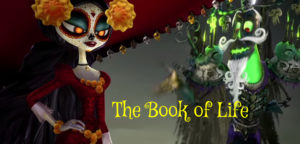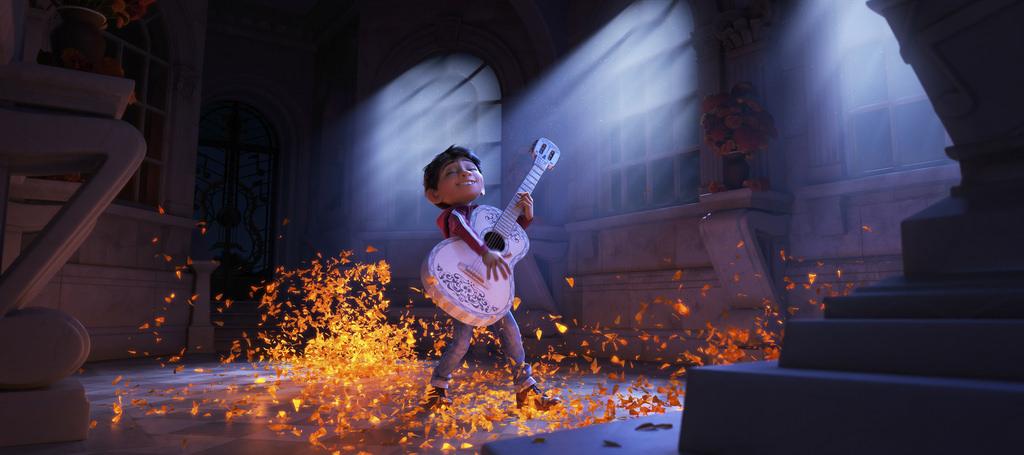Despite the widespread observance of Día de los Muertos, until recently there has been surprisingly little representation of the Mexican holiday within American media.
Google “animated movies of Día de los Muertos,” and only two full-length feature results pop up. The first result is Coco, a 2017 Disney-Pixar 3D animated film directed by Lee Unkrich, the director of Toy Story 2. The second is The Book of Life, another 3D animated film produced in part by The Shape of Water’s Guillermo del Toro. It was released in 2014 by Reel FX Creative Studios and 20th Century Fox Animation.
As a holiday celebrated by thousands of people throughout the world for centuries, it is shocking to see that so few movies about Día de los Muertos have been done in America.
Día de los Muertos, or Day of the Dead, is a Mexican holiday where people honor and celebrate the memory of the dead. This centuries-old tradition begins at midnight on Oct. 31 and ends on Nov. 2, and it is believed that during this time the souls of the departed come back to earth to visit the living.
When Coco was originally released, many believed that it was a rip-off of The Book of Life, which came out three years prior. After all, not only did both movies involve the Day of the Dead, but both also followed a young, musically-inclined man going against the wishes of his family. Superficially, these two films were too alike to not compare.
However, despite these similarities, the two movies tell two different tales and follow their own unique narratives. Although both represent and celebrate Mexican culture, they are each their own story.
This still begs the question: which Día de los Muertos film is better?
The Book of Life
The Book of Life is a story within a story. In it, a museum tour guide tells a group of children the ancient tale of a lopsided love triangle that shaped the fate of the world. Two deities place bets on a trio of best friends, staking a claim on either Manolo or Joaquin in regards to who will win the hand of Maria, to decide who will rule the Land of the Remembered. Manolo, a wannabe musician descended from a line of famous bullfighters, is ultimately forced to choose between his family and his heart as he faced with either upholding decades of family tradition or following his own path in life. He ends up getting sent to the Land of the Remembered and spends the majority of the movie struggling to return to his love in the Land of the Living on the Day of the Dead.

This movie focuses heavily on themes of family, tradition, love, and sacrifice. With colorful, mesmerizing art, unique characters, quirky designs and astute attention to detail, The Book of Life is a visual delight.
Coco
Coco tells the story of a young boy who wishes to become a musician in a family who hates music. Despite his family’s protests, he steals away during Día de los Muertos to try and compete in a music contest, leading him to “borrow” a guitar and end up on a quest in the Land of the Dead to reunite with his no-good musician great-grandfather in order to return home. Throughout this film, Miguel learns to cherish tradition and to follow his dreams while also remaining a part of his family.

Coco also hits on the themes of family, tradition, love, and sacrifice. While the artwork for this movie is stunning, the strength of this film lies in its storytelling capabilities and realistic characterizations. It also made me cry for almost the entirety of the third act.
Which Is Better?
Which film is the better Día de los Muertos movie? In all honesty, I would have to say Coco. While The Book of Life is a wonderful, feel-good movie about love, family, and tradition that takes place during the Day of the Dead, Coco is a film truly about the holiday that accurately captures the emotions and essence of a tradition that has strived for centuries to keep people connected to their familia. While both films authentically highlight Mexican heritage and traditions, Coco is the one that goes to great lengths to educate its viewers on the culture, and thoroughly illustrates what it means to be a part of a family in that culture as well.
Regardless of these films’ similarities and differences, they are both worthy of a watch, and it is great to finally see representation of a holiday upheld and beloved by many.

